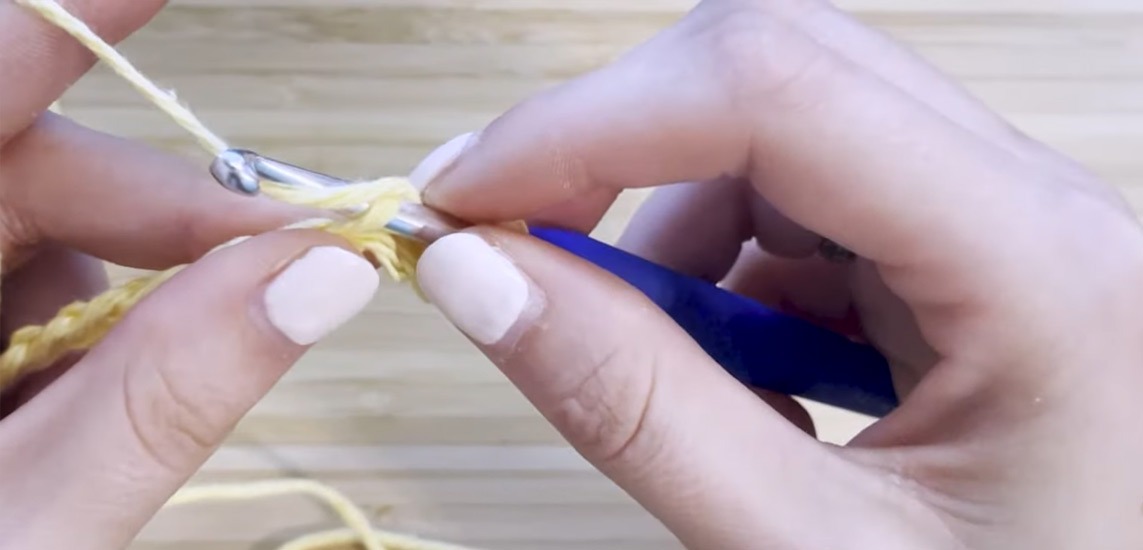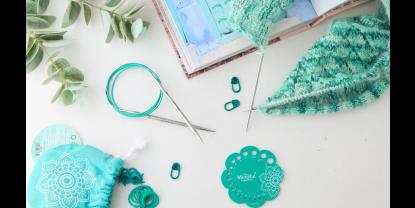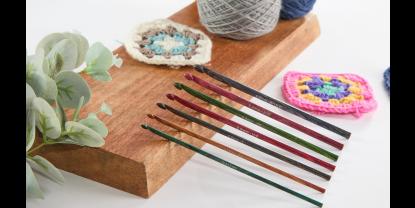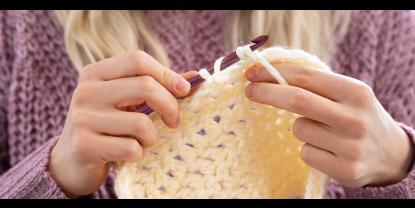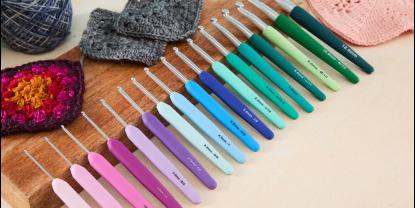The double crochet stitch, abbreviated DC, is one of the five basic crochet stitches. This stitch is an excellent option for beginners, as it is straightforward and enjoyable to learn and practice. As double crochet is so popular, it is often the very first stitch that a crochet novice masters! This stitch is so adaptable that it can be used in rows, rounds, or even spiral rounds, as well as to make edges, borders, and seams.
What is the Double Crochet Stitch?
The double crochet stitch is a versatile stitch that can be utilized in a plethora of crochet projects, such as pillows, top-down beanies, sweaters, and dolls and Amigurumi.
Abbreviation
In the US, it’s called single crochet and abbreviated SC while the UK, it’s called double crochet and abbreviated DC.
Chart Symbol
In crochet charts, you will see the double crochet represented by an “X” or a “+.”
Turning Chain
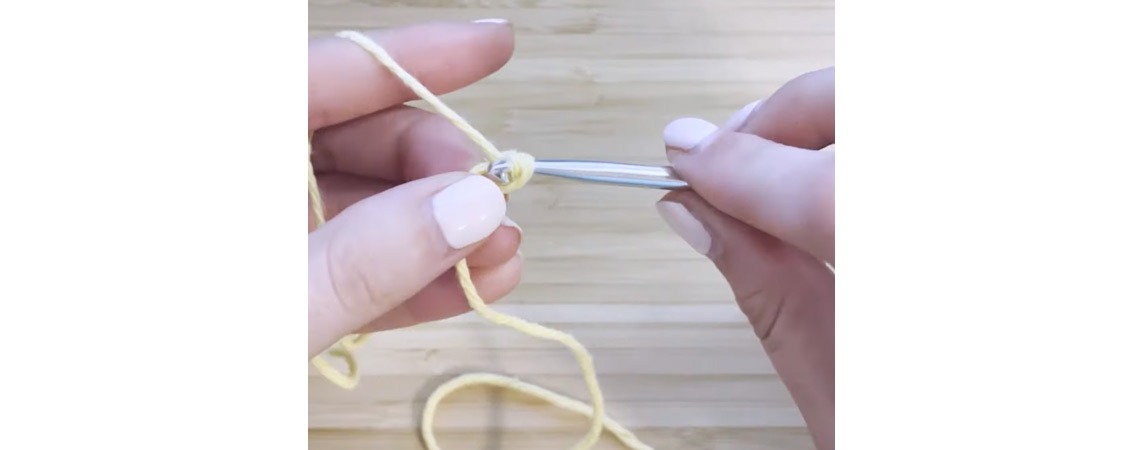
To begin a row of double crochet, create a turning chain of one chain stitch. This is a collection of chain stitches that are formed at the beginning of the row to raise the yarn to the proper height for the next stitch. Keep in mind that the ch-1 does not count as a stitch, and thus the first stitch of the new row will be inserted into the last stitch of the previous row.
Fabric
Plain rows of double crochet will create a solid and dense fabric with no holes or gaps.
To get started, select a yarn and a crochet hook. For starters, using a smooth worsted weight yarn and an ergonomic hook is recommended, with light-colored yarn making it easier to spot the stitches. You can use your single ended crochet hooks or double-end ones or even the Tunisian hooks that come with interchangeable cords. Choosing the right size is important, so refer to our guide on everything you need to know about crochet hook sizes.
Step-by-Step Double Crochet for Beginners.
To make a double crochet stitch, the following steps must be taken.
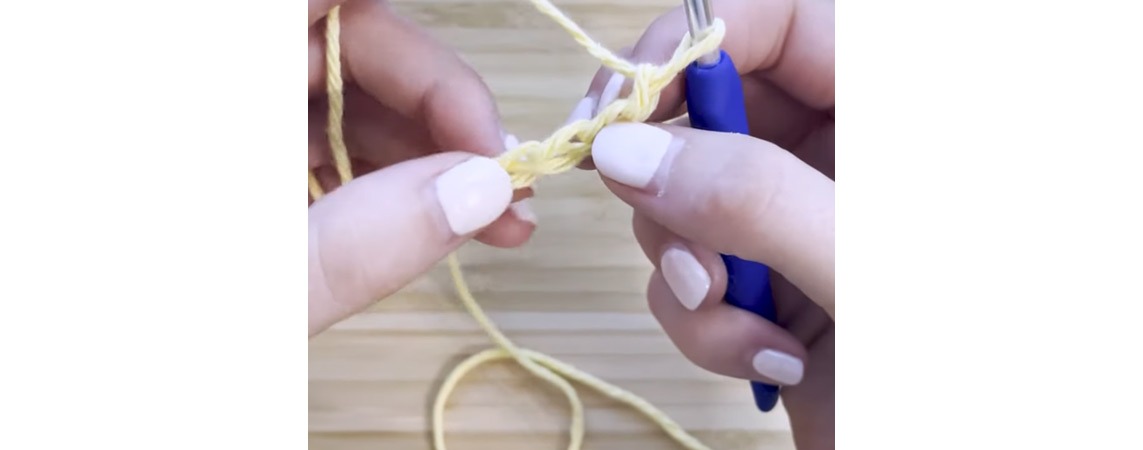
Step 1: Insert the hook into the next stitch, with the tip of the hook underneath both of the loops at the top of the stitch.
Step 2: Yarn over the hook, from back to front, and pull a loop of yarn through the stitch. You will now have two loops on the hook.
Step 3: Yarn over the hook once more and pull the yarn through both loops on the hook. You will now have one loop left on the hook.
Double Crochet into a Foundation Chain.
To begin with a chain stitch and a row of double crochet, the following should be done.
Step 1: Make a slip knot and a foundation chain. The number of chain stitches are generally mentioned in the pattern or sometimes mentioned in cms., which you can calculate with a measuring tape. For practice make a chain of 15-20 stitches. Refer to our guide on how to make crochet a chain.
Step 2: To make the first double crochet, insert the hook into the second chain from the hook (not the one around the hook).
Step 3: Yarn over and pull up a loop.
Step 4: Yarn over and pull through both loops on the hook.
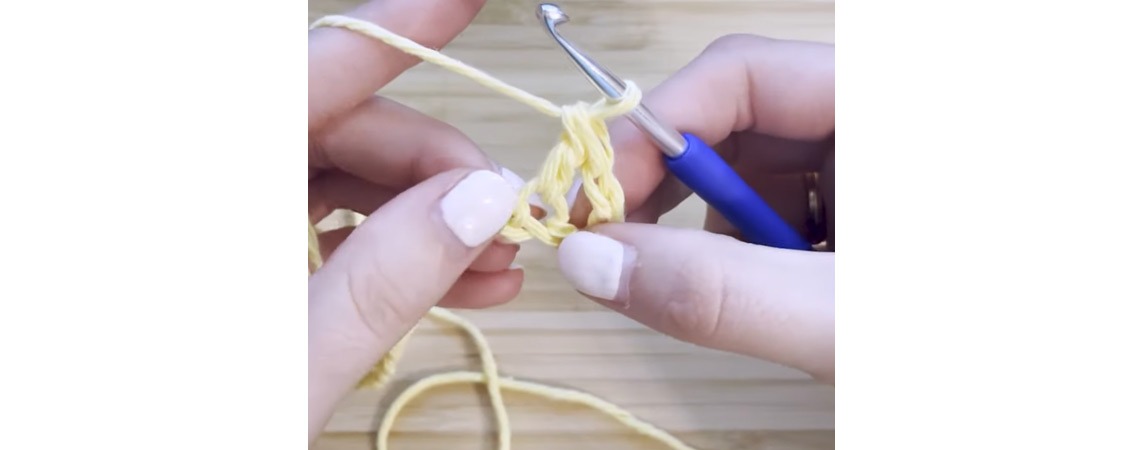
Continue these steps to make DC in every chain.
Double Crochet into another Row
After the first row of double crochet, the project should be turned clockwise and another row created. Chain 1 and turn the work and look at the backside of the previous row. Start the row by making a double crochet stitch in the first stitch. Once complete, ch-1 and turn to start the next row.
Fastening Off: When finished, cut the yarn, leaving a 6-inch yarn tail. Lift the hook straight up, bringing the yarn tail through the remaining loop on the hook. Pull the yarn tail to tighten the last stitch, and then weave in the yarn ends with a wool needle.
Double Crochet in the Round
To work in rounds, either joined rounds or continuous rounds may be used. For joined rounds, the last stitch of the round is joined to the first stitch with a slip stitch, followed by ch-1. This chain does not count as a stitch and the next round should start by making a double crochet in the same stitch as the slip stitch join. Do not stitch into the slip stitch or ch-1 at the end of the round, as it is not a real stitch.
To make continuous rounds, the stitch should be made into the first stitch of the previous round. Skip the slip stitch join and ch-1, and make the join to the first SC of the round.
With the information provided, mastering the double crochet stitch is simple and easy. Now, grab your yarn and let's get started!
Increases and Decreases
Increases and decreases are used to create shape and volume in crochet patterns. Here’s how to make them.
Double Crochet Increase
A double crochet increase abbreviated “dc inc”, is very easy to do. To make a DC increase, make 2 double crochet stitches in one stitch. The increase will add one stitch to your stitch count and give shape to the project.
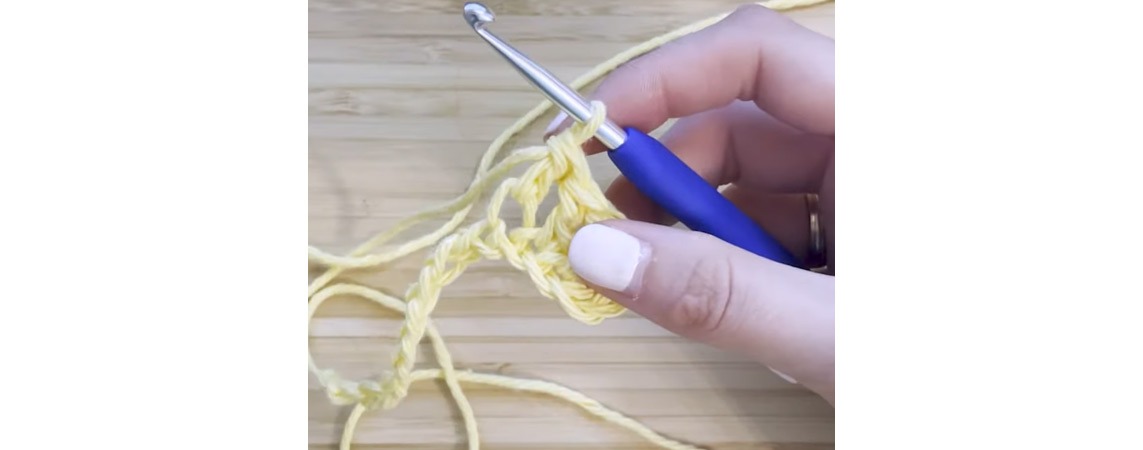
You can also make 3 or even 4 DC into the same stitch if your pattern calls for it.
How to do a Double Crochet Decrease
A double crochet decrease is also quite simple. To decrease, you’ll work two neighboring stitches together to create one stitch.
In patterns, the double crochet decrease is often abbreviated “dc dec” or “dc2tog”, but you may also see it written as “double crochet the next 2 stitches together”.
Invisible DC Decrease is a variation on the double crochet decrease that is almost invisible. Here’s how to do it.
Step 1: Insert the crochet hook into the front loop of the first DC stitch. (You will have 2 loops on the hook.)
Step 2: Insert the hook into the front loop of the second stitch. (Three loops on the hook.)
Step 3: Yarn over and pull through the first two loops on the hook. (Two loops on the hook)
Step 4: Yarn over and pull through both loops on the hook. (One loop on the hook, and the decrease stitch is complete.)
Working Double Crochet in Different Loops
When you make a regular double crochet, you insert your yarn under the top two loops of the stitch. These top two loops are often referred to as the front loop and the back loop.
You can create variations of the standard DC stitch loop by working solely in the front loop, back loop, or various combinations of loops.
With this, you are ready to try out the double crochet stitch. You can practice the crochet stitch pattern on a gauge swatch or begin straight with a project such as a colourful crochet scarf or a bag.


